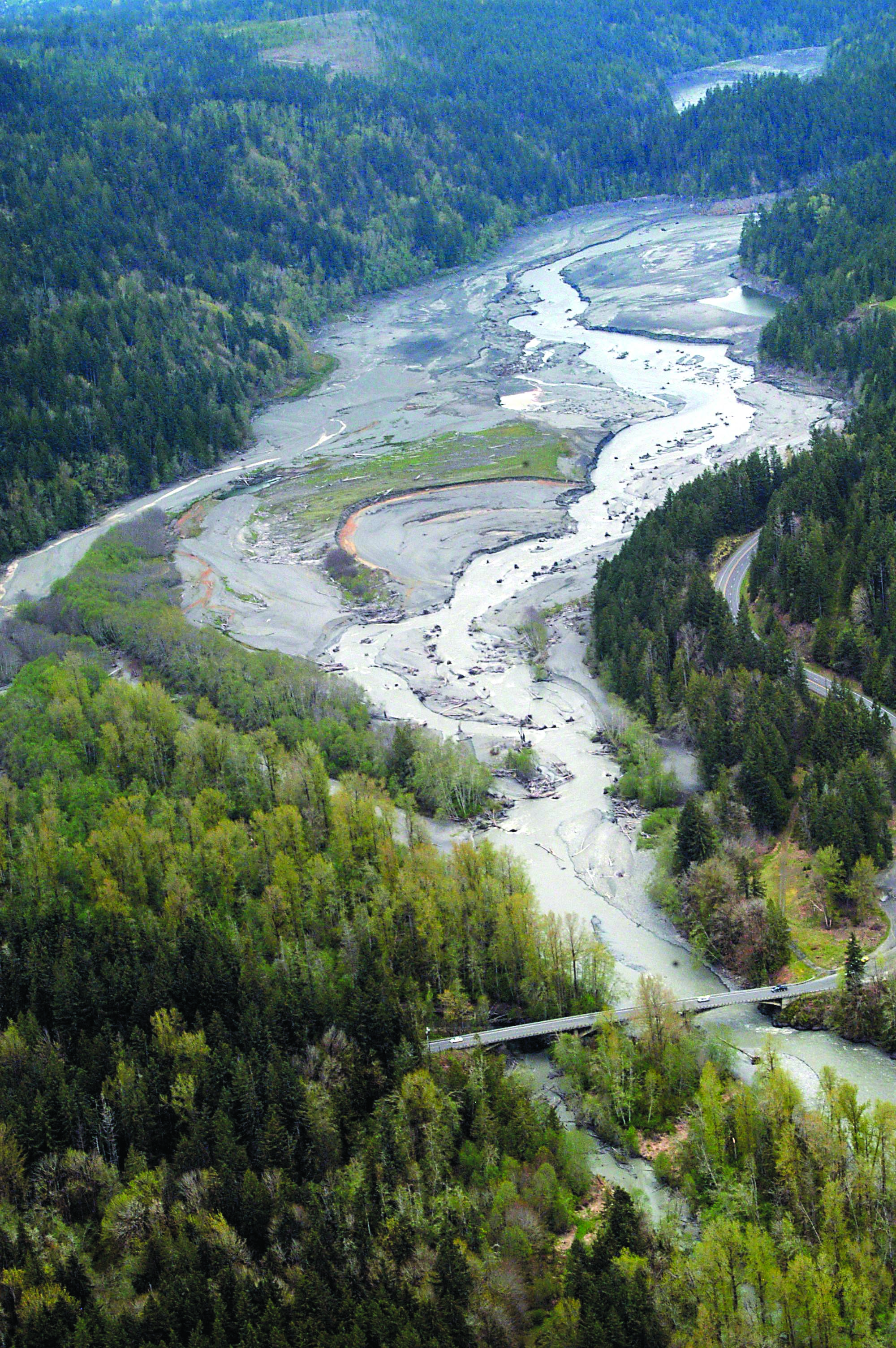PORT ANGELES — Lake Aldwell is gone.
And a shrinking Lake Mills is pouring over a lowered Glines Canyon Dam.
Aerial photographs of the Elwha River taken Friday show the state of the river on the eve of a two-month “fish window” beginning Tuesday that requires all work in the water to be paused.
Barnard Construction crews began dismantling the two dams, which were built without fish ladders, in mid-September as part of a $325 million federal project to restore the river’s once-famous salmon runs.
Now only a silver stream of a wild river can be seen where Lake Aldwell once stretched behind the former Elwha Dam, once 108 feet tall, the remnants of which were removed in mid-March.
Crews continued to lower the river channel through the former Elwha Dam site last week, excavating the material used to plug the bottom of the dam (5 miles from the mouth of Elwha) after it blew out in 1912, Olympic National Park officials said.
Glines Canyon Dam
Eight miles upriver, Glines Canyon Dam’s one-room headgate house was removed last week.
The structure once housed the controls that regulated the amount of water from the reservoir that entered the powerhouse through a large pipe called a penstock.
In the next few months, the boom of explosives will emanate from Glines Canyon Dam.
During the fish window — which allows sediment to clear downstream — the contractor will use explosives to remove the sections of dam that are above the water level.
Once it ends June 30, controlled blasting will continue to take down the dam, once 210 feet tall, the tallest dam to be dismantled in U.S. history.
Hammer silenced
A hydraulic hammer on a floating barge in Lake Mills had been used since September to chip away at Glines Canyon Dam.
But it has finished its useful life, the park said.
During repairs last week, mechanics found wear patterns that showed it had reached its capacity, so they began relocating the excavator and dismantling and removing the barge from Lake Mills.

